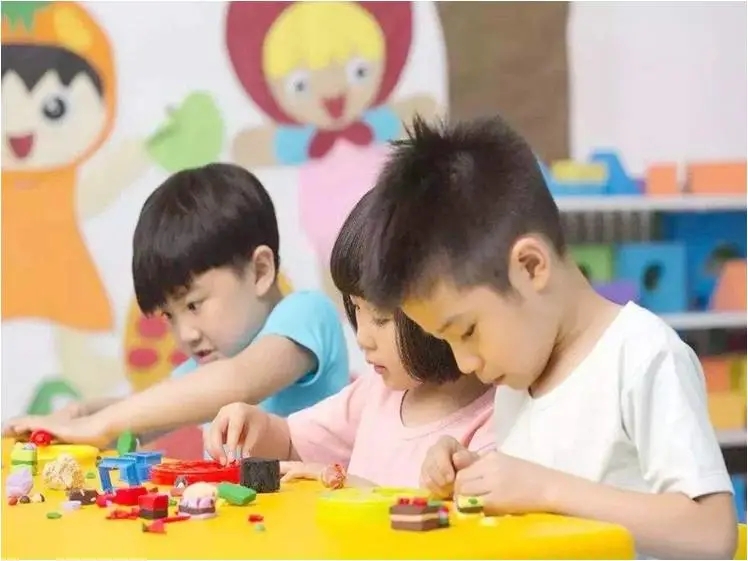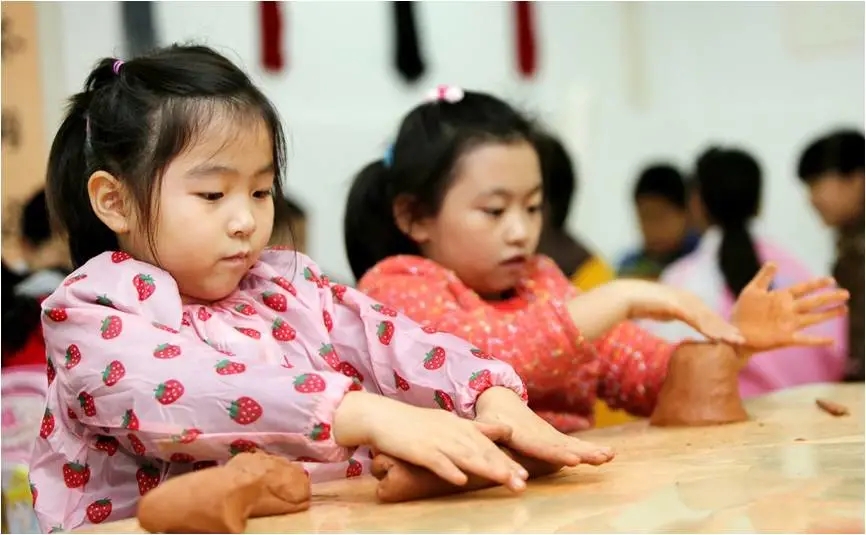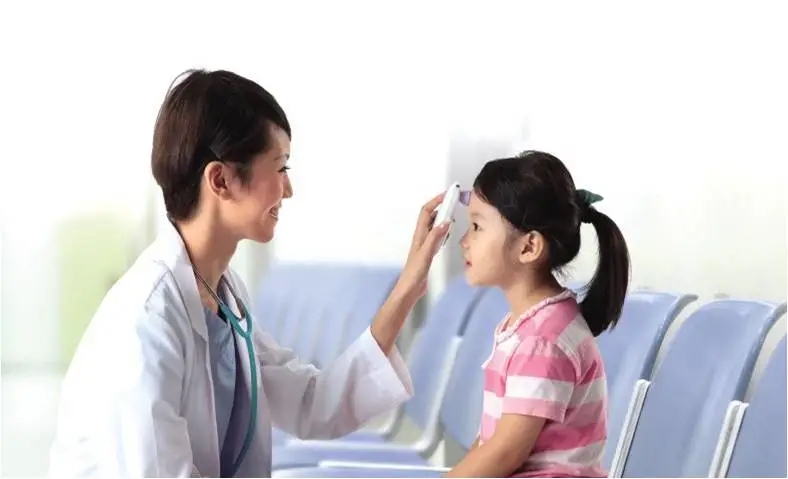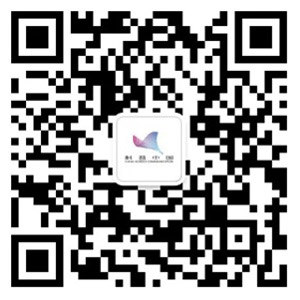这是 达医晓护 的第 3019 篇文章
上一篇我们介绍两到三岁孩子各阶段发育的科普。本次的主题是接着一起来看看三到四岁孩子的正常发育轨迹,如何促进孩子的发育,以及在什么情况下需要引起重视去看医生。
 情感发展
情感发展
学龄前阶段是儿童情感发展重要的时期。在这一年里,你的孩子真正开始理解她的身体,思想和情感是她自己的。她知道快乐、悲伤、恐惧和愤怒的区别。你的孩子也表现出对他想象出来的事情的恐惧,关心并在意他人的行为,对熟悉的人表现出喜爱。随着他越来越自信,他也会越来越善于处理自己的情绪。
游戏和学习
游戏很重要,因为这是孩子学习和探索情感的方式。学龄前儿童对与其他孩子玩耍和交朋友更感兴趣。他们可能会开始在小团体中更加合作。孩子理解“我的”和“他/她的”的概念,所以分享开始变得更容易。
孩子在玩游戏中开始变得更有想象力。例如,他可能会和想象中的朋友或玩具玩假装游戏,比如和玩具一起举办茶话会。他会尝试不同的角色——例如,他可能会假装成医生或家长。在这个年龄,学龄前儿童有想象中的朋友是很常见的,虽然孩子可能能分辨出现实中的和幻想中的区别。
到了四岁,你的孩子可能会喜欢假装骗人别人并描述所发生的事情——例如,“妈妈以为我睡着了!”同时,她也会担心被别人忽悠。
学龄前儿童可能对自己和他人的身体非常好奇。例如,家长可能会发现孩子在看自己和其他孩子的生殖器。自然好奇心加上角色扮演的游戏通常是儿童性行为的一个典型部分。但如果你担心孩子的这些行为,最好和儿科医生或儿童心理咨询专业人员谈谈。
语言
学龄前儿童在3-4岁这个时期语言会有很大的发展,通过听父母和其他大人说话,还有听故事来学习了很多新单词。孩子对交流表现出更多的兴趣,喜欢讲故事和交谈。孩子会理解父母所说的大部分内容,并可能猜出他不知道的单词的意思。一般来说,孩子听懂的单词比他会说的更多。
三岁左右的学龄前儿童会说3-5个单词组成的句子,甚至更多单词的句子。而且孩子说的话大部分时候都能够被听懂。她会指着图片说出物体的名称—例如,指着牛的鼻子说鼻子。
到四岁时,孩子会说5-6个单词以上的长句,基本上都能被听懂。孩子能听懂你说的大部分话,并且会遵循2-3个步骤的指令,只要是关于熟悉的事情——例如,“把书合上,交给妈妈”。他会理解“长的”或“瘦的”这样的形容词,会用“快乐”或“悲伤”这样的表示“感觉”的单词。
思维
这个年龄的孩子经常会着迷于她周围的世界,会问很多“谁”、“什么”和“为什么”的问题。对于词汇的理解,孩子会明白大/小和多/少这样的相反的意思,以及“上面”、“里面”和“下面”这样的概念。
同时,孩子的记忆力也在发展。比如,他能记住儿歌,甚至可以重复给你听。他还开始会指出他记住的字母和数字,并给它们命名,会数到四个物体,并按颜色和形状对它们进行排序。
日常生活技能
三到四岁的孩子开始喜欢和家里人一起吃饭,知道家里的生活日常,并喜欢一些特别的家庭活动,比如过生日。
孩子也开始学会越来越独立了。例如,他可以自己吃饭,自己穿上不用系鞋带的鞋子,解开纽扣,在穿衣服时帮忙更多。这个年龄基本完成如厕训练,并可能会自己做一些日常的个人卫生,比如上厕所、擦屁屁,自己洗手洗脸,不过有些任务还是需要大人的帮助和监督,比如刷牙。
运动
学龄前儿童在这个阶段喜欢运动,很活跃。他们走台阶越来越熟练,骑三轮车,投掷,接球和踢球,跑步,攀爬,双脚跳,单脚跳,和金鸡独立单脚平衡。
在精细活动方面,这个年龄儿童可能会画圆圈或正方形,用大块的积木搭建积木塔,会使用儿童安全剪刀。还会喜欢用蜡笔,铅笔和画刷,画画有助于孩子发展想象力。
在3到4岁这个年龄阶段,孩子可能还会:
拧开罐子的盖子
知道自己的性别和年龄
知道一些形状和颜色的名称
到四岁左右会用手握着铅笔学着描一些笔划和字母
自己穿或脱衣服。
 如何促进3岁到4岁儿童发育?
如何促进3岁到4岁儿童发育?
1.给孩子充足的玩耍时间:玩有助于学龄前儿童表达喜悦、兴奋、愤怒或恐惧等情绪。学龄前儿童喜欢玩沙子或泥巴里,玩布偶戏,或者在户外奔跑、翻跟斗、翻滚。
2.找时间进行创造性和艺术性的游戏:可以是绘画、绘画或装扮换装游戏。玩音乐游戏也是好主意-孩子可能会喜欢跳舞或用简单的乐器做音乐。
3.陪宝宝一起阅读:和孩子一起阅读、讲故事、唱歌和背诵童谣,可以鼓励孩子说话和培养他的想象力。
4.和孩子一起做饭:这有助于你的孩子对健康食物感兴趣,学习一些新单词,并开始熟悉数学概念,如“一半”、“一茶匙”或“30分钟”。你可以让孩子做一些简单的烹饪活动,比如拌个沙拉或者做个三明治。
5.与孩子一起玩游戏中要引导孩子学会分享和轮流交欢。玩的时候,可以这样说:“现在轮到我搭积木塔了,然后轮到你”,或者“你和我一起用红积木,我和你一起用绿积木”。对于这个年龄段的孩子来说,学会分享还是有点难,所以当你的孩子有分享行为的时候,一定要给他很多表扬和鼓励。
 在什么情况下需要引起重视去看医生
在什么情况下需要引起重视去看医生
如果观察到3岁的孩子有下述情况之一的,需要带孩子去就医进一步评估。
和你没有目光对视
看东西或听东西有困难
不会说3个单词的短句
不会遵循简单的指令-例如,“请把球拿给我”
很难和照顾者分离
对其他孩子没有兴趣
不会玩角色扮演的过家家游戏—例如,不会玩假装购物或乘公交车的过家家游戏
看上去很笨拙 --例如,走路或奔跑时容易绊倒
握拿小的东西有困难,比如铅笔,蜡笔
不会画简单的图形
如果观察到4岁的孩子有下述情况之一的,需要带孩子去就医进一步评估。
看东西或听东西有困难
不懂简单的两步的指令--例如,“把娃娃放下来,把球捡起来”
有行为问题--例如,因为很小的事情大发脾气,或者在你离开时还是很粘或者大哭大闹
不会玩角色扮演的过家家游戏—例如,不会玩假装做妈妈或爸爸
看上去很笨拙 --例如,走路或奔跑时容易绊倒
握拿小的东西有困难,比如铅笔,蜡笔
画简单的图形有困难,比如圆形或方形
自己穿衣服或上厕所有困难
What’s happening to your toddler’s 3-4 years
Feelings
This is an important time in your preschooler’s emotional development. During this year, your child really starts to understand that her body, mind and emotions are her own. She knows the difference between feeling happy, sad, afraid or angry. Your child also shows fear of imaginary things, cares about how others act and shows affection for familiar people. And as he gets more confident, he’ll also get better at handling his emotions.
Playing and learning
Play is important because it’s how your child learns and explores feelings. Your child is now more interested in playing and making friends with other children. She might start to play more cooperatively in small groups. She understands the concept of ‘mine’ and ‘his/hers’, so sharing starts to get easier.
Your child is becoming more imaginative during play. For example, he might play pretend games with imaginary friends or toys, like having a tea party with his toys. He’ll try different roles – for example, he might pretend to be a doctor or a parent. And at this age, it’s common for preschoolers to have imaginary friends , although your child can probably tell the difference between real and fantasy.
By four, your child might enjoy tricking others and describing what happened – for example, ‘Mum thought I was asleep!’ At the same time, she’ll also worry about being tricked by others.
Your preschooler might be very curious about bodies – his own and other people’s. For example, you might find your child looking at his own and other children’s genitals. A combination of natural curiosity and role-playing is usually a typical part of childhood sexual behaviour. But if you’re concerned about a child’s sexual behaviour, it’s a good idea to talk with a paediatrician or another qualified health professional.
Talking
Your child’s language will develop a lot this year.Your child will learn lots of new words by listening to you and other adults and also by listening to stories. She’ll show more interest in communicating and might like to tell stories and have conversations.
Your child will understand most of what you say and might guess the words he doesn’t know. Generally, he’ll understand many more words than he can say.
Around three years, your child will use sentences of 3-5 words, or even more. Other people will understand what she’s saying most of the time. She’ll point to parts of pictures – for example, the nose of a cow – and name common objects.
By four years, your child will speak in longer sentences of around 5-6 words or more. Other people will understand him all the time. He understands most things you say and will follow instructions with 2-3 steps, as long as they’re about familiar things – for example, ‘Close the book, and give it to Mum’. He’ll understand adjectives like ‘long’ or ‘thin’, and use ‘feeling’ words like ‘happy’ or ‘sad’.
Thinking
Your preschooler is fascinated by the world around her and will ask lots of ‘who’, ‘what’ and ‘why’ questions. When it comes to understanding, your child knows about opposites like big/small and more/less and concepts like ‘on’, ‘in’ and ‘under’.
Your child’s memory is developing. For example, he can remember nursery rhymes and might even repeat them back to you. He’ll also start to point out letters and numbers that he remembers and name them, and can count up to four objects and sort them by colour and shape.
Everyday skills
Your preschooler loves eating family meals together. She understands your family routine and appreciates special events, like birthdays.
Your child is also becoming more independent. For example, he can feed himself, put on shoes that don’t have laces, undo buttons and do a bit more for himself when he’s getting dressed.
Your child is probably toilet trained, and she might be able to do some daily hygiene tasks on her own, like going to the toilet, wiping poo from her bottom and washing her hands and face. But she’ll still need your help and supervision with tasks like brushing teeth.
Moving
Your preschooler loves moving and being active. He’s better at walking up steps, riding a tricycle, throwing, catching and kicking a ball, running, climbing, jumping, hopping and balancing on one foot.
When it comes to using her hands, your preschooler might be able to draw a circle or square, build big towers using blocks, and use child-safe scissors. She’ll love using crayons, pencils and paintbrushes, which is great because drawing and painting build your child’s imagination.
At this age, your child might also:
unscrew a lid from a jar
know his own gender and age
know the names of some shapes and colors
hold a pencil and copy some letters by four years
dress and undress himself.
How to help your preschooler development at this age
Give your child lots of playtime: play helps preschoolers express feelings like joy, excitement, anger or fear. Your child might like messy play in sand or mud, pretend play with puppets, or outdoor play with plenty of running, tumbling and rolling.
Make time for creative and artistic play: this might be painting, drawing or dress-up games. Musical play is another idea – your child might like to dance, jump around or make music with simple instruments.
Read with your preschooler: reading together, telling stories, singing songs and reciting nursery rhymes all encourage your child's talking, thinking, and imagination.
Do some cooking with your child: this helps your preschooler to get interested in healthy food, learn new words and understand maths concepts like ‘half’, ‘1 teaspoon’ or ‘30 minutes’. You can give her simple things to do, like tossing a salad or putting together sandwiches.
Play games with your child that involve learning to share and taking turns. When you play, say things like, ‘Now it’s my turn to build the tower, then it’s your turn’, or ‘You share the red blocks with me, and I’ll share the green blocks with you’. Sharing is still hard for children at this age, so give your child lots of praise when he shares.
When to be concerned about child development at 3 years
doesn’t look you in the eye
has trouble seeing or hearing things
isn’t using three-word sentences.
doesn’t understand simple instructions – for example, ‘Please give me the ball’
is difficult to separate from his primary caregiver
isn’t interested in other children
doesn’t pretend during play – for example, doesn’t pretend to go shopping or ride on a bus.
is clumsy – for example, trips over a lot when walking or running
finds it hard to handle small objects – for example, a pencil or crayon
isn’t drawing simple shapes.
When to be concerned about child development at 4 years
has trouble seeing or hearing things.
can’t understand two-part commands like ‘Put the doll down, and pick up the ball’
has very challenging behaviour – for example, big tantrums over very small things or still clings or cries when you leave
doesn’t pretend during play – for example, doesn’t pretend to be mum or dad
is clumsy – for example, trips over a lot when walking or running
finds it hard to handle small objects – for example, a pencil or crayon
has trouble drawing shapes – for example, a circle or square
has difficulty dressing herself or using the toilet.
作者:澳大利亚墨尔本大学医学院儿科博士
百汇医疗(中国)儿科医师
蒋本然




 扫码下载APP
扫码下载APP

 科普中国APP
科普中国APP
 科普中国
科普中国
 科普中国
科普中国